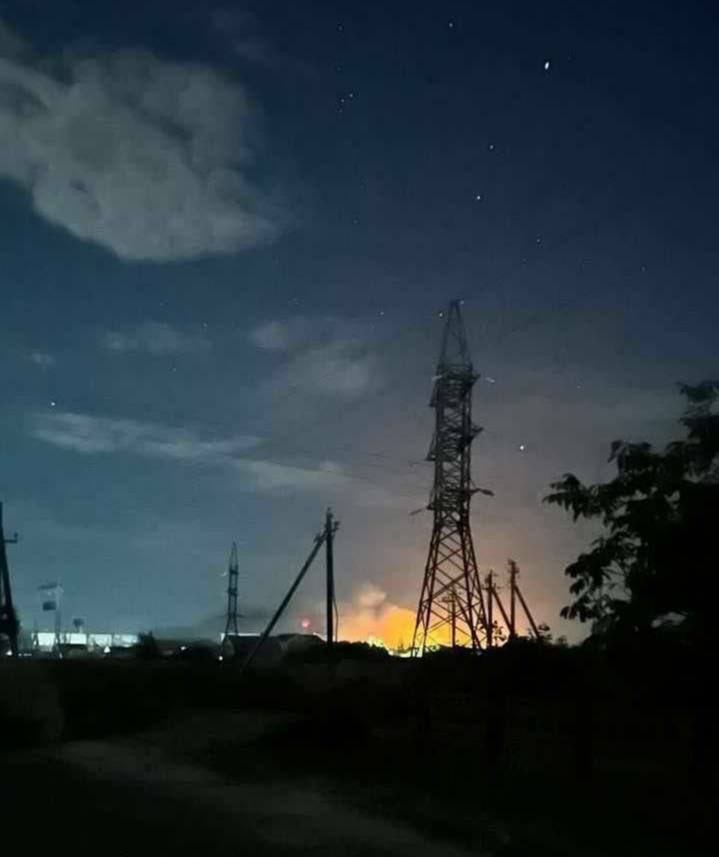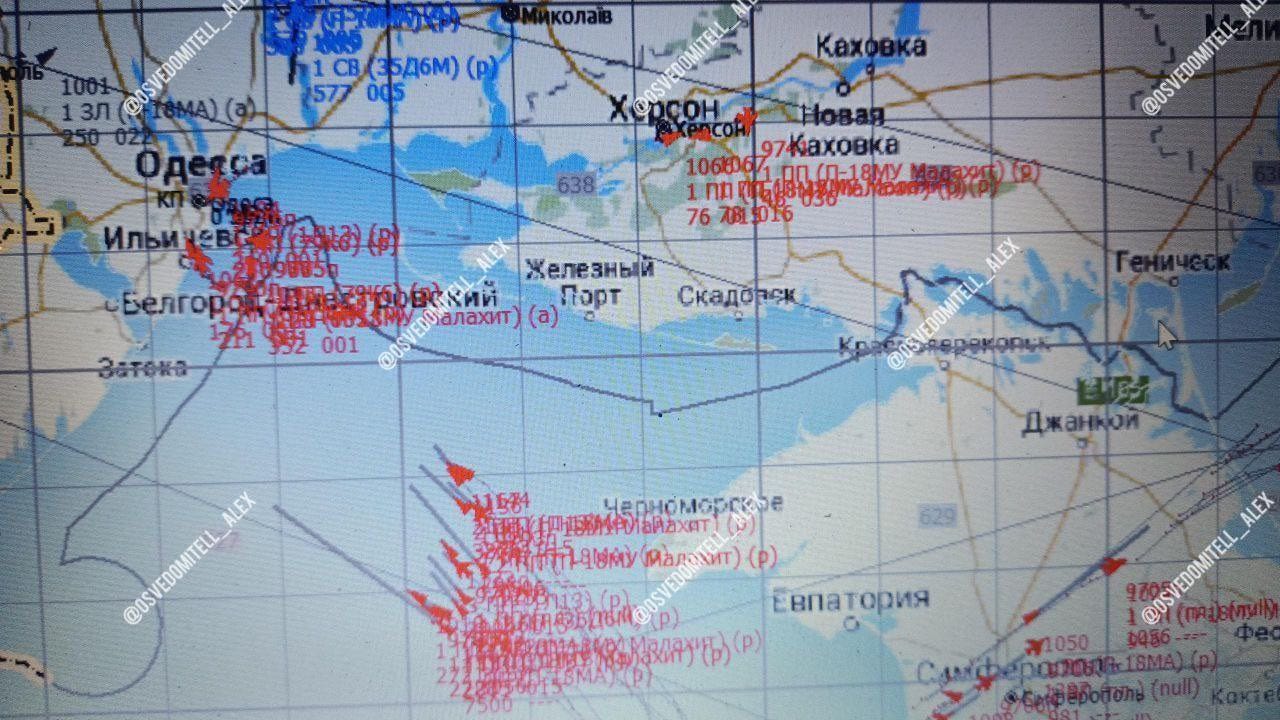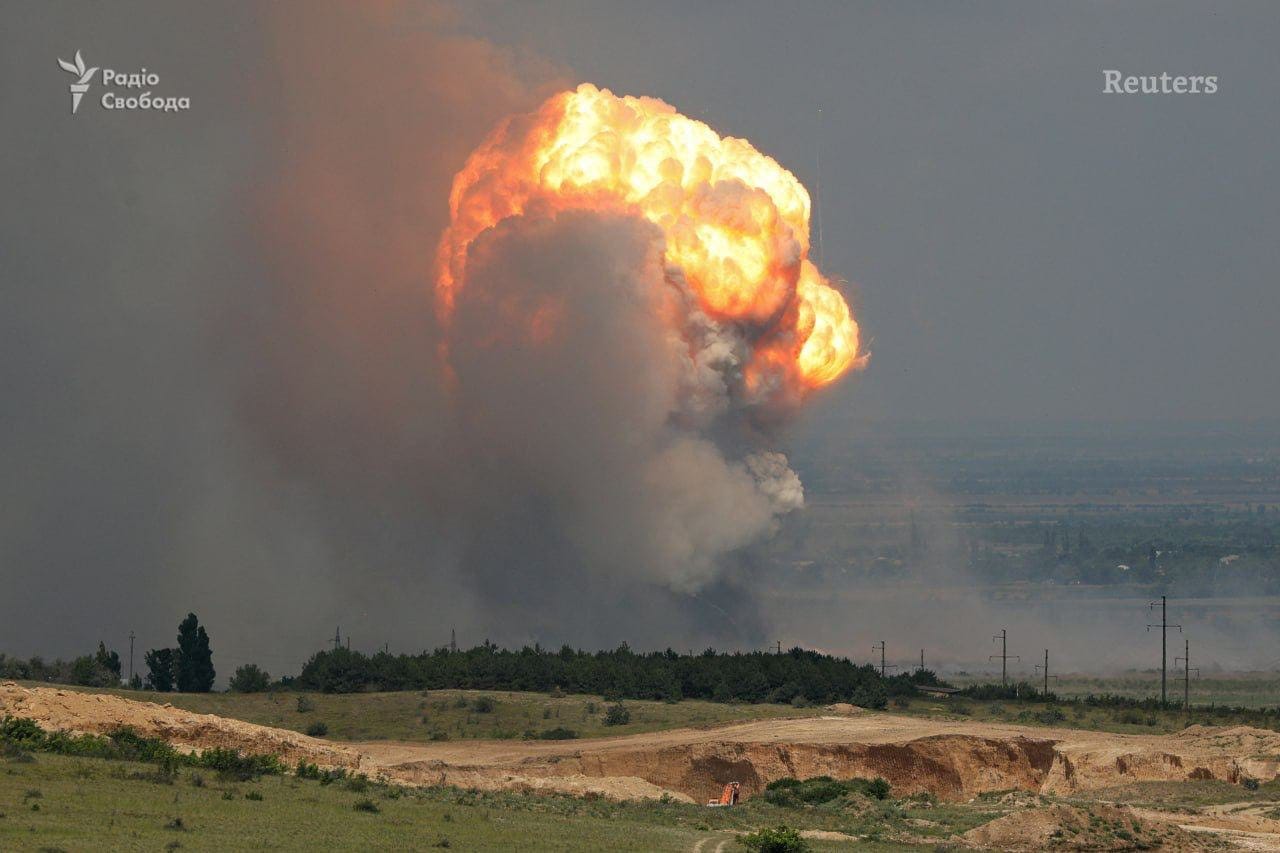Hello everybody!
A lot is going on all along the battlefields of eastern and southern Ukraine, so let me get straight to the ‘events’. Ground warfare and analysis are to follow later on…
Since the night from 10 to 11 July, the Russians are running an all-out missile offensive on the port of Odesa. That is: there are three ports there. Port 1 and Port 2 are along the coast, surrounded by the city; the Port 3 is few kilometres north of it, and, reportedly, partially owned by the Cargill Corporation (essentially: a big-style retailer for agricultural products; see, the characters who are actually dictating food prices, while letting farmers have very little of their profit…).
Sadly, despite Ukrainian claims to have developed and pressed into service some kind of a new, domestically developed air defence system, fact is that the air defences of Odesa are nowhere near as strong as those of Kyiv. Centred on the 14th Radio-Technical Brigade (essentially: radars and communications) and the 38th SAM-Regiment (which, between others, appears to be operating Polish-supplied S-125 Neva/SA-3 Goa SAM-systems), these are ‘too thin’. Similar is valid for the port of Mykolaiv, protected by the 201st SAM-Brigade. It is possible that both the 38th SAM-Regiment and the 201st SAM-Brigade are reinforced by elements of the 160th SAM-brigade, but: they simply do not have the sophistication and depth of Kyiv’s defences.
Certainly enough, Ukrainians claimed to have shot down 26 out of 28 Shaheds streamed from the Prymorsko-Akhtarsk area (including one by a FIM-92 Stinger). Indeed, 22 of these were claimed by air defences of Odesa and Mykolaiv, but: two Shaheds have hit the offices and port administration in Odesa, while one Iskander-M hit the port of Mykolaiv, and another the port of Ochakiv. While levels of damage in the last two cases remain unknown, the local fire-brigade was quick in extinguishing the resulting fire in Odesa. Also hit on 12 July was the city of Zaporizhzhya, where more than 20 civilians were wounded.

During the night from 12 to 13 July, the Russians released two streams with a total of 20 Shahed-136s: one from the Kursk Oblast in direction of Kyiv, and another from the Primosko-Akhtarsk area (direction still unclear). Moreover, the Russians fired two Kalibrs from the Black Sea, and one Iskander-M from Dzhankoi (on the occupied Crimea). Ukrainians claimed all 20 Shaheds and both Kalibrs for shot down.
During the night from 13 to 14 July, 17 Shahed-136s were launched by the Russians: 16 were claimed shot down. Additionally, the PSU and ZSU claimed 7 Orlan UAVs shot down (the latter is of particular interest because Orlans are crucial for the Russian battlefield reconnaissance). That said, my impression is that the Russian strikes of 12-13 and 13-14 July were meant to ‘fix’ PSU’s air defences: keep them in the Kyiv area, so to prevent their re-deployment to the Odesa area, pending what was to follow…
Meanwhile, the PSU continued pounding selected targets – mostly in southern Zaporizhzhya. For example, early on 11 July, ‘something’ was hit in the Melitopol area, and then the PSU blew up the Duna Hotel in Berdyansk, used by the VSRF as a command and lodging facility. Reportedly, General Oleg Tsokov and dozens of other Russian troops were killed. Two other Russian bases in Berdyansk were hit later during the day, too (at around 14.00 and 16.30hrs): certainly enough, the Russians claimed ‘all missiles shot down’, but most of detonations heard were actually caused by their Pantsyr SAM-systems targeting MALD decoys released by the PSU. Around 15.00hrs, there was an air raid alert in northern Ukraine, caused by the take-off of Russian MiG-31Ks from an air base in Belarus, but this was sounded ‘clear’ around 15.22hrs.
Early on 14 July, the Russians reported an Ukrainian UAV strike on the Kursk Oblast. One was reportedly shot down near a nuclear power plant in Kurchatov; another three in the outskirts of Voronezh. Later on, the PSU claimed to have shot down 16 out of 17 Shahed LPGMs, most of these in the south: 6 were shot down in the Dnipropetrovsk area. The one that came through should’ve hit something in the Kryvyi Rih area.
Around 22.00hrs of 14 July, the take-off of two Tu-22M-3 bombers from Mozdok AB prompted an air raid alert in eastern Ukraine. Indeed, these then apparently launched 3-4 Kh-22s on Zaporizhzhya, but what exactly was targeted remains unknown: local officials reported damage on 16 high-rise buildings, a medical facility and educational institutions. Simultaneously, the PSU shot down four out of six Shahed drones released ‘from the south’ (for a total of 16 reported as shot down all through 14 July).
In the evening of 15 July, the Russians hit ‘an infrastructure facility’ in Zaproizhzhya, knocking out energy supply to one of city’s districts. During the night, they hit Kharkiv with several S-300s, but reportedly caused ‘only minor damage’.
Early on 16 July, the PSU flew air strikes on Luhansk (where a weapons depot in the Yubileyn area was hit; the still from the video attached below should be from that area), and Mariupol, while the Russians targeted Kharkiv with four S-300s, again.
Early on 17 July, Ukraine hit the Kerch (or ‘Crimea’) Bridge with two modified water scooters. Resulting explosions were strong enough to drop one span of the road bridge and killing two civilians underway in a car. Initially, there were reports that the railway bridge – crucial for the flow of Russian military supplies and reinforcements into southern Kherson and Zaporizhzhya – was damaged too (because railway traffic was stopped), but this turned out to be wrong, later on.
During the night from 17 to 18, the Russians launched 6 Kalibrs and 36 Shahed-136: Ukrainians claimed 6 cruise missiles and 31 LPGMs shot down (25 of these between Zaporizhzhya City and Odesa), and this attack seems to have caused only minor damage in the port of Odesa. That said, an industrial facility in the Osnoviansky district of Kharkiv was hit by Russian missiles, and one person was killed. In turn, multiple Russian bases and supply depots in the Melitopol area were hit by Ukrainian missiles (at least five hits were recorded), and at least one in the Krasnoperekopsk area on the occupied Crimea.
However, during the night from 18 to 19 July, the Russians run a particularly effective strike: for the first time ever, they’ve managed to coordinate all of deployed weapons so that these have reached the target zone simultaneously. Read: first deployed Shaheds, then faster missiles. In total, Ukrainians reported to have detected 32 Shaheds (released from the Chauda training ground on the Crimea and the Primorsko-Akhtarsk area) and 16 Kalibr cruise missiles: as these were to approach their targets, the four Tu-22M-3 bombers of the VKS released 8 Kh-22s and a Su-35 released a single Kh-59, while the Russian ground forces fired 6 P-800 Oniks supersonic cruise missiles (from Bastion coastal defence systems on the occupied Crimea). Ukrainians claimed to have shot down 23 Shaheds, 13 Kalibrs, and one Kh-59, but there is little doubt that the other Russian missiles – especially Kh-22s and P-800s came through to cause heavy damage on wheat-export-infrastructure in Odesa. Furthermore, one missile hit the Kanatovo AB outside Kirovohrad, at least one should have hit a hotel complex in Koblevo (Mykolaiv area) reportedly used as a military residence, at least one hit Chornomorsk, and one or two Shaheds hit Kherson, causing extensive damage to several buildings. Over 60,000 tons of wheat – all destined for China - were destroyed.



On 19 July, a Russian military depot at the Old Crimea training ground was blown up, prompting the occupation authorities to evacuate numerous nearby villages.
During the night from 19 to 20 July, the Russians were back to deploy 19 Shaheds (this time from the occupied Crimea), followed by 4 Kh-22s, 7 P-800 Oniks, 3 Kalibrs and 5 Iskander-K. Once again, Ukrainian air defences were overpowered by the sheer number of incoming targets: they reported to have shot down 13 LPGMs and 5 missiles. The rest came through, causing heavy damage in Odesa (4 wounded), Mykolaiv (where 1 was killed and 19 were wounded), and in Chernihiv. This video is purportedly showing another Shahed hitting something in the Zhytomyr area, on 20 July, too. The Keystone Cops in Moscow declared their targets for ‘storage for fuels and ammunition of the ZSU’, but, and once again: there’s no doubt that their primary target were transshipment facilities in the port of Odesa.

Early on 21 July, the Russians then attacked the wheat terminal in Odesa with Kalibrs again. During the afternoon, these were followed by 7 P-800s – which, according to the Keystone Cops – ‘targeted objects used for preparing terrorist attacks against the Russian Federation’. Well, if earning bucks through cultivating and exporting wheat and barely is ‘terrorism’, then… ho-hum…
The Russian blitz on Odesa slowed down during the night from 21 to 22 July: Ukrainians claimed ‘just’ five Shaheds shot down. In turn, the PSU hit the Russian supply facilities on the occupied Crimea: strikes were reported on a POL depot in Oktybarskoye and on Navoivanovka, an abandoned air base used to store ammunition and equipment. Also hit was something outside Simferopol, causing fire in a residential building.
Finally, the last night the Russians deployed five different weapons systems to pound the historic centre of Odesa: Kalibr, Onyks, Kh-22 and Iskander-M and Iskander-Ks. One person was killed, 19 people were wounded when six residential buildings were damaged, and a major cathedral - indeed: the ‘pride of the Russian world’ (destroyed by Communists in 1936, re-built in 1990-20002s….) - was destroyed: the problem was that the emergency services rushed to the scene of attack, and this was then hit by another missile…
BTW, also hit was a restaurant and museum in the former residence of Count Tolstoy: guess, that should ‘confirm’ that it’s ‘Ukrainians who are genociding the Russians in Ukraine’…






Thank you Tom.
This is typical gangster racket - " if you do not pay we will burn your shop".
Ruzzia is not a state but a gang.
NATO must surely give Ukraine the power to obliterate those Russian warships. It' is ridiculous that they can just sit there with impunity and lob missiles into civilian infrastructure.